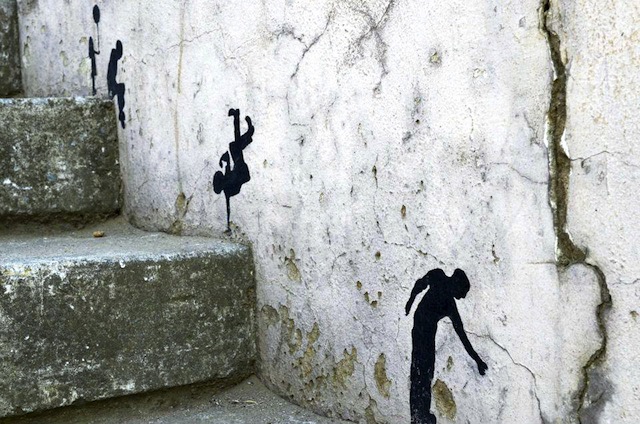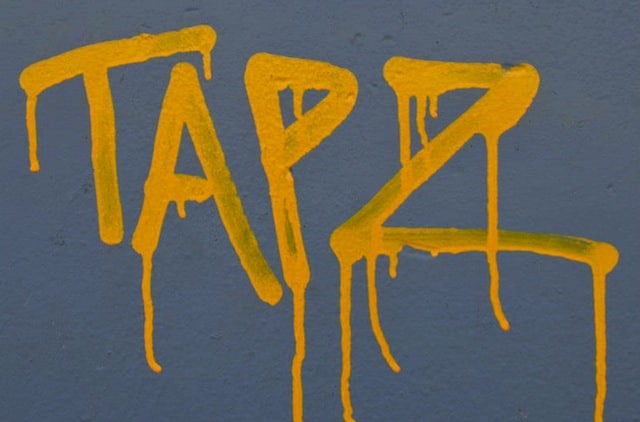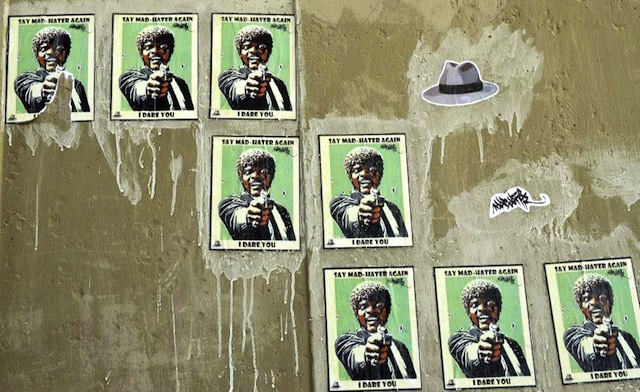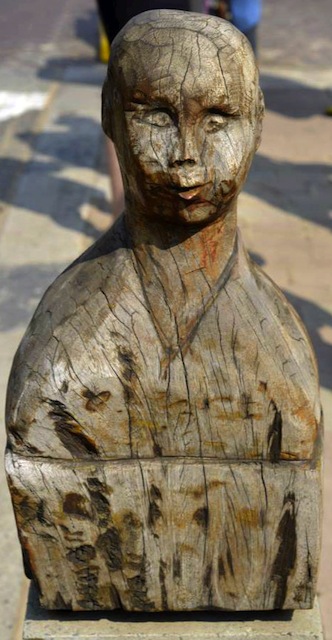The art in Johannesburg South Africa has a big focus on context. People respect and appreciate things more when they have a meaning.

I took a walking tour through Johannesburg aka Joburg’s suburb of Newtown. Joburg is haunted by stereotypes, one of which is that Cape Town is South Africa‘s creative hub while Joburg is all business. That truth is, Joburg has a vibrant arts and culture scene, one facet of which is street art.
By 2040, Joburg’s goal is to be the largest street art city in the world. They’re already well on their way, with 460 official works, although the unofficial number is more like 1,000. Moreover, a portion of every Johannesburg Development Agency’s (JDA) project is put toward public art. Despite the fact Johannesburg’s street art scene started about 10 years after the rest of the world, they’re not only catching up to the competition, they’re exceeding it.
Public Art is Everywhere in Newtown
To immerse yourself in Johannesburg’s public art head to the suburb of Newtown. All around the neighborhood, you’ll find arts, culture and heritage attractions — there’s even an official Newtown Heritage Trail with walking maps and numbered attractions with information boards — as well as street art. The art in Newtown holds a more an alternative, non- commercial feel than some of the other neighborhoods in Joburg. Moreover, it’s an area where everyone can participate in the burgeoning arts scene regardless of social status or wealth.
To really understand Newtown and why it’s the epicenter of Johannesburg culture, it’s worthwhile to go back in time to the turn of the 20th century, when the area was was a successful industrial town. This all came to an end in April 1904, when the fire brigade set the neighborhood on fire and forced people out — the first forced removal in Johannesburg — in order to get rid of of what they thought was a bubonic plague outbreak.
In October 1904, a rebuilding and renaming of the neighborhood took place, as did the birth of what we know today as Newtown. Afterward, artists wanting to take advantage of big open spaces of the abandoned industrial buildings moved to the suburb, which in turn led to Newtown becoming an economic hub.
While graffiti is technically illegal in South Africa, the government and people of Johannesburg accept and promote it, as long as you get permission from the building owner.
“You don’t stand and observe street art like you do artwork in a museum. Outdoor art becomes integrated into the city and life,” explains Tania. “This creative element is necessary in society. Even if you ignore it, it changes your entire outlook on the environment. It’s much better than looking at a gray building or blank wall.”

Open Air Graffiti Gallery in Newtown
One of the best spots in Newtown to explore street art is under the M1 Highway on Henry Nxumalo Street. This is where you’ll find the unofficial graffiti gallery of Johannesburg, filled with colorful, collaborative and thoughtful works by a mix of young, old, up and coming, and established artists. Tip: The best works tend to be toward the back of the dead end street, where well-known artists like Tapz and Finn express themselves.

Tapz Tag
Tapz is the most notorious artist in Johannesburg. The only graffiti artist that’s been able to tag a Joburg train car, Tapz is known for being bold, brazen and tagging in unexpected places. While seeing his tags might give you the impression he’s a tough, reckless guy, Tapz is actually a laid-back artist in love with nature. In interviews, he’s been known to talk about how he believes street art is about experiencing creativity in the fresh air and appreciating the beauty of the outdoors.

Street Art by Falco in Newtown’s Open Air Graffiti Gallery
Under the highway you’ll also find a mural by Falco, one of South Africa’s most iconic graffiti artists. He’s not only known for his intriguing style, but also for laying the foundation for graffiti art as a credible form of visual art. In 1996, he spearheaded the first graffiti competition in South Africa, with the concept spreading all over the world.
Along with participating in various community street art projects in South Africa, he’s also traveled the world doing graffiti and has taken part in esteemed ventures like representing the country in the 2006 international “Write For Gold” Competition; working with large brands like Adidas, Black Flys, MTV, Puma and Levi’s; and creating the backdrop for Nelson Mandela’s 79th birthday.
Suddenly, I spy something much different than the murals and tags. It’s images of Morgan Freeman from one of my favorite films, Pulp Fiction.
“This is called wheatpaste,” explains Tania. “It’s very popular in Johannesburg because it’s quick and lasts a long time.”

Wheatpaste in Newtown
Wheatpaste involves creating a printed image offsite and then using wheat paste — an adhesive made with wheat flour or starch and water — to stick it to an open air wall. It’s popular for artists who want to send a message using a repeating image.
What I find really interesting about Johannesburg’s graffiti scene is that it’s more closely associated with the fine arts than hip hop, with locals appreciating the creativity and visual aesthetics of the works.
One of Johannesburg’s most important al fresco art projects is “The Newtown Heads.” Littered around Newtown are about 560 busks and other statues crafted from recycled railway sleepers.
The project involves about 150 artists creating heads that represent African diversity and how Newtown has become a home for thousands of African and global immigrants. It’s a great example of how people interact with the art around them, as you’ll see locals draw mustaches on the faces or dress them with accessories.

One of the busks that’s part of the “Newtown Heads”
When we spy a graffiti work by a female artist Tania becomes extremely excited.
“It’s so cool to see street art by a female,” she beams. “Right now there’s only about eight of us in Joburg.”
With the way Johannesburg is progressing in the realm of open air art, there’s no doubt in my mind it will soon see a rise in female artists — along with growth in another creative areas — as it continues to work its way toward being the world’s biggest public art city.

Jessica Festa is the editor of the travel sites Jessie on a Journey (http://jessieonajourney.com) and Epicure & Culture (http://epicureandculture.com). Along with blogging at We Blog The World, her byline has appeared in publications like Huffington Post, Gadling, Fodor’s, Travel + Escape, Matador, Viator, The Culture-Ist and many others. After getting her BA/MA in Communication from the State University of New York at Albany, she realized she wasn’t really to stop backpacking and made travel her full time job. Some of her most memorable experiences include studying abroad in Sydney, teaching English in Thailand, doing orphanage work in Ghana, hiking her way through South America and traveling solo through Europe. She has a passion for backpacking, adventure, hiking, wine and getting off the beaten path.








